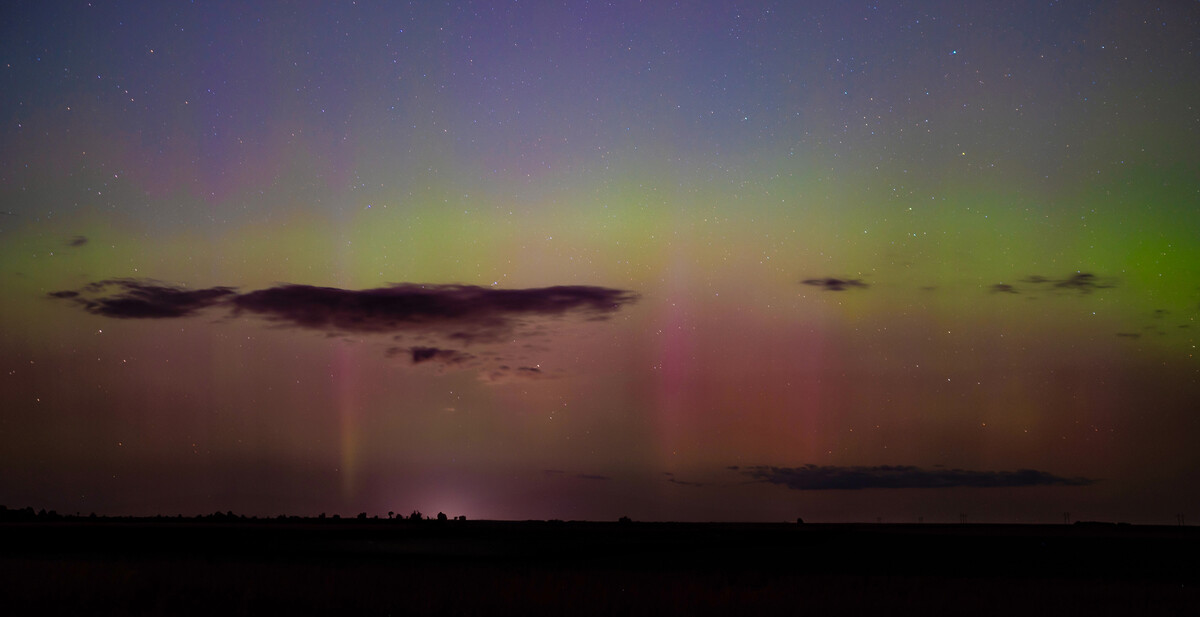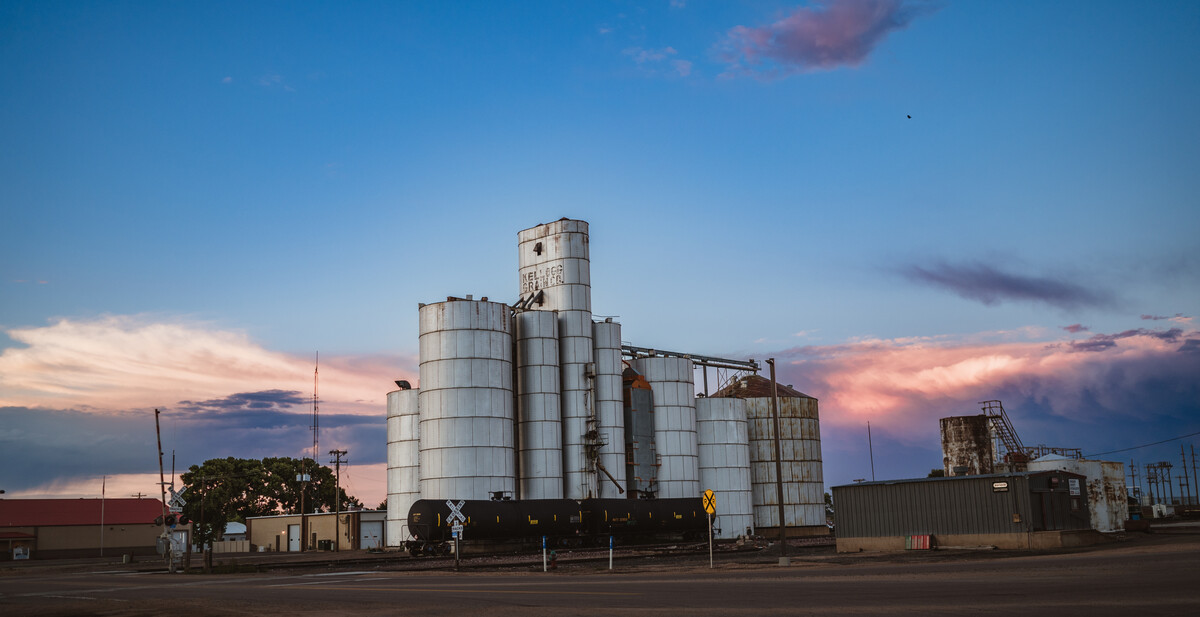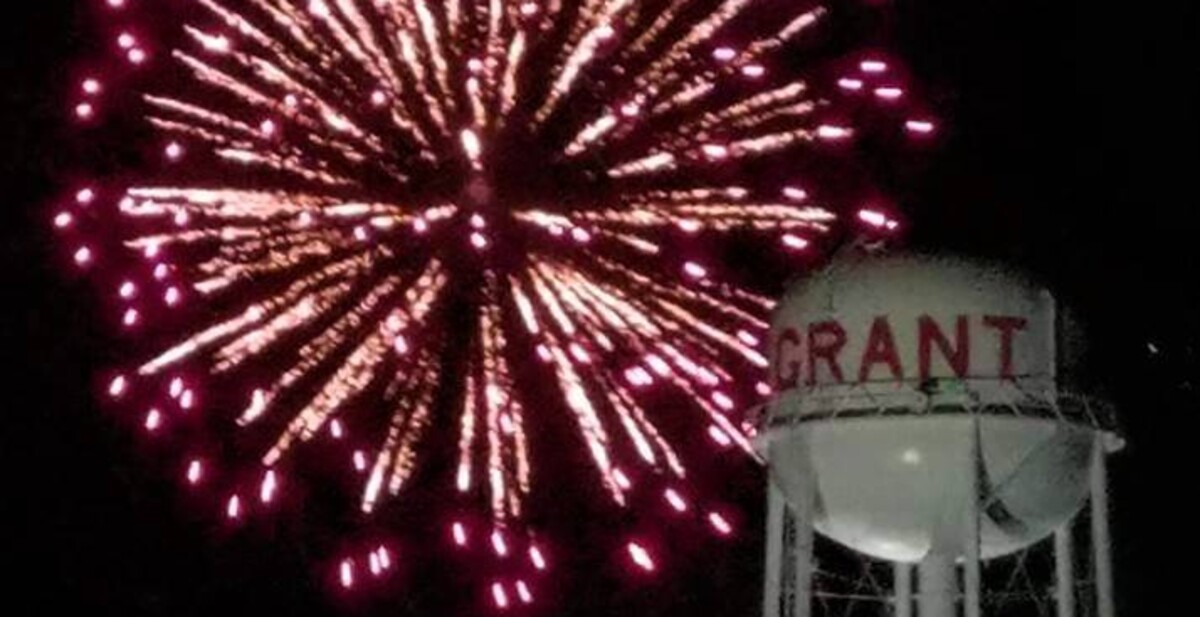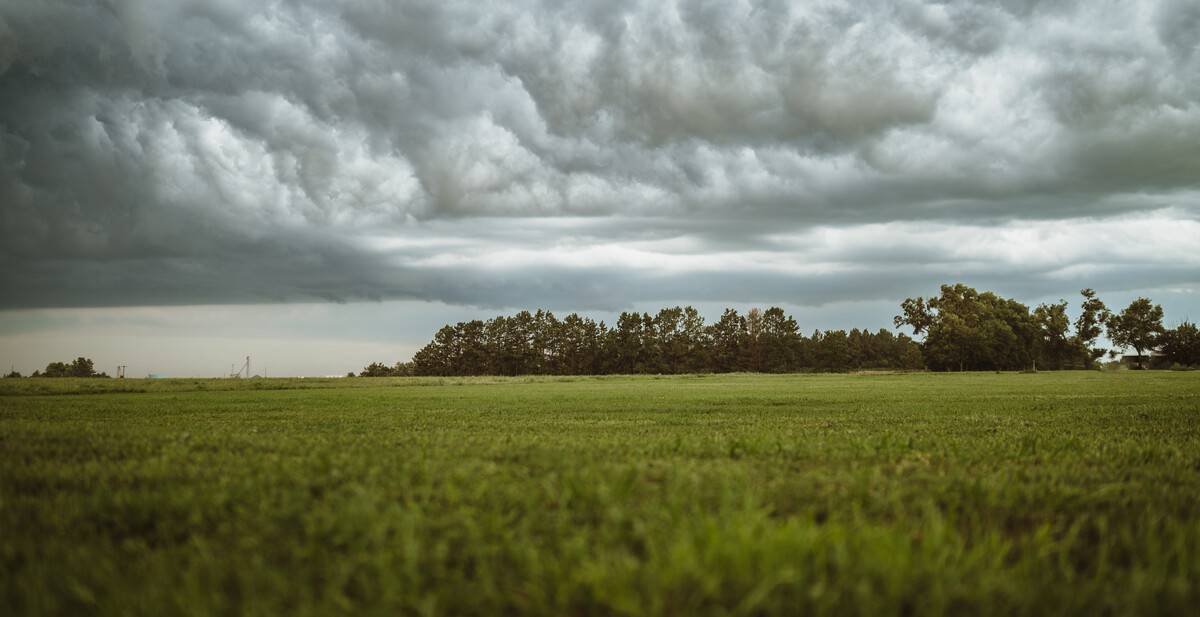2023 Water Quality Report

City of Grant
Annual Water Quality Report
For January 1 to December 31, 2023
This report is intended to provide you with important information about your drinking water and the efforts made by the City of Grant water system to provide safe drinking water.
Para Clientes Que Hablan Español: Este informe contiene información muy importante sobre el agua que usted bebe. Tradúzcalo ó hable con alguien que lo entienda bien.
For more information regarding this report, or to request a hard copy, contact:
BILLY K TAYLOR
308-352-6101
If you would like to observe the decision-making processes that affect drinking water quality, please attend the regularly scheduled meeting of the Village Board/City Council. If you would like to participate in the process, please contact the Village/City Clerk to arrange to be placed on the agenda of the meeting of the Village Board/City Council.
Drinking water, including bottled water, may reasonably be expected to contain at least small amounts of some contami-nants. The presence of contaminants does not necessarily indicate that water poses a health risk. More information about contaminants and potential health effects can be obtained by calling the EPA's Safe Drinking Water Hotline (800-426-4791).
Source Water Assessment Availability:
The Nebraska Department of Environment and Energy (NDEE) has completed the Source Water Assessment. Included in the assessment are a Wellhead Protection Area map, potential contaminant source inventory, and source water protection information. To view the Source Water Assessment or for more information please contact the person named above on this report or the NDEE at 402-471-3376 or go to http://dee.ne.gov.
In order to ensure that tap water is safe to drink, EPA prescribes regulations which limit the amount of certain contaminants in water provided by public water systems. FDA regulations establish limits for contaminants in bottled water which must provide the same protection for public health.
Sources of Drinking Water:
The sources of drinking water (both tap water and bottled water) include rivers, lakes, streams, ponds, reservoirs, springs, and groundwater wells. As water travels over the surface of the land or through the ground, it dissolves naturally occurring minerals and, in some cases, radioactive material, and can pick up substances resulting from the presence of animals or from human activity.
The source of water used by City of Grant is ground water.
Contaminants that may be present in source water include:
* Microbial contaminants, such as viruses and bacteria, which may come from sewage treatment plants, septic systems, agricultural livestock operations and wildlife.
* Inorganic contaminants, such as salts and metals, which can be naturally occurring or result from urban storm water runoff, industrial, or domestic wastewater discharges, oil and gas production, mining, or farming.
* Pesticides and herbicides, which may come from a variety of sources such as agriculture, urban storm water runoff, and residential uses.
* Organic chemical contaminants, including synthetic and volatile organic chemicals, which are by-products of industrial processes and petroleum production, and can also come from gas stations, urban storm water runoff, and septic systems.
* Radioactive contaminants, which can be naturally occurring or be the result of oil and gas production and mining activities.
Drinking Water Health Notes:
Some people may be more vulnerable to contaminants in drinking water than the general population. Immunocompromised persons such as persons with cancer undergoing chemotherapy, persons who have undergone organ transplants, people with HIV/AIDS or other immune system disorders, some elderly, and infants can be particularly at risk from infections. These people should seek advice about drinking water from their health care providers. EPA/CDC guidelines on appropriate means to lessen the risk of infection by Cryptosporidium and other microbial contaminants are available from the Safe Drinking Water Hotline (800-426-4791).
If present, elevated levels of lead can cause serious health problems, especially for pregnant women and young children. Lead in drinking water is primarily from materials and components associated with service lines and home plumbing. All Community water systems are responsible for providing high quality drinking water but cannot control the variety of materials used in plumbing components. When your water has been sitting for several hours, you can minimize the potential for lead exposure by flushing your tap for 30 seconds to 2 minutes before using water for drinking or cooking. If you are concerned about lead in your water, you may wish to have you water tested. Information on lead in drinking water, testing methods, and steps you can take to minimize exposure is available from the Safe Drinking Water Hotline (800-426-4791), at http://www.epa.gov/safewater/lead or at the NDEE Drinking Water Division (402-471-1009).
The City of Grant is required to test for the following contaminants: Coliform Bacteria, Antimony, Arsenic, Asbestos, Barium, Beryllium, Cadmium, Chromium, Copper, Cyanide, Fluoride, Lead, Mercury, Nickel, Nitrate, Nitrite, Selenium, Sodium, Thallium, Alachlor, Atrazine, Benzo(a)pyrene, Carbofuran, Chlordane, Dalapon, Di(2-ethylhexyl)adipate, Dibromochloropropane, Dinoseb, Di(2-ethylhexyl)- phthalate, Diquat, 2,4-D, Endothall, Endrin, Ethylene dibromide, Glyphosate, Heptachlor, Heptachlor epoxide, Hexachlorobenzene, Hexachlorocyclopentadiene, Lindane, Methoxychlor, Oxamyl (Vydate), Pentachlorophenol, Picloram, Polychlorinated biphenyls, Simazine, Toxaphene, Dioxin, Silvex, Benzene, Carbon Tetrachloride, o-Dichloro- benzene, Para-Dichlorobenzene, 1,2-Dichlorethane, 1,1-Dichloroethylene, Cis-1,2,-Dichloroethylene, Trans-1,2-Dichloroethylene, Dichloromethane, 1,2-Dichloropropane, Ethylbenzene, Monochlorobenzene, 1,2,4-Trichloro- benzene, 1,1,1-Trichloroethane, 1,1,2-Trichloroethane, Trichloroethylene, Vinyl Chloride, Styrene, Tetrachloroethylene, Toluene, Xylenes (total), Gross Alpha (minus Uranium & Radium 226), Radium 226 plus Radium 228, Sulfate, Chloroform, Bromodichloromethane, Chlorodibromomethane, Bromoform, Chlorobenzene, m-Dichlorobenzene, 1,1-Dichloropropene, 1,1-Dichloroethane, 1,1,2,2-Tetrachlorethane, 1,2-Dichloropropane, Chloromethane, Bromomethane, 1,2,3-Trichloropropane, 1,1,1,2-Tetra- chloroethane, Chloroethane, 2,2-Dichloropropane, o-Chlorotoluene, p-Chlorotoluene, Bromobenzene, 1,3-Dichloropropene, Aldrin, Butachlor, Carbaryl, Dicamba, Dieldrin, 3-Hydroxycarbofuran, Methomyl, Metolachlor, Metribuzin, Propachlor.
How to Read the Water Quality Data Table:
The EPA and State Drinking Water Program establish the safe drinking water regulations that limit the amount of contaminants allowed in drinking water. The table shows the concentrations of detected substances in comparison to the regulatory limits. Substances not detected are not included in the table. The state requires monitoring of certain contaminants less than once per year because the concentrations of these contaminants do not change frequently. Therefore, some of this data may be older than one year.
MCL (Maximum Contaminant Level) – The highest level of a contami- nant that is allowed in drinking water. MCLs are set as close to the MCLGs as feasible using the best available treatment technology.
MCLG (Maximum Contaminant Level Goal) – The level of a contaminant in drinking water below which there is no known or expected risk to health. MCLGs allow for a margin of safety.
AL (Action Level) – The concentration of a contaminant which, if exceeded triggers treatment or other requirements which a water system must follow.
MRDL (Maximum Residual Disinfectant Level) – The highest level of a disinfectant allowed in drinking water.
N/A – Not applicable.
Units in the Table:
ND – Not detectable.
ppm (parts per million) – One ppm corresponds to 1 gallon of concentrate in 1 million gallons of water.
mg/L (milligrams per liter) – Equivalent to ppm.
ppb (parts per billion) – One ppb corresponds to 1 gallon of concentrate in 1 billion gallons of water.
ug/L (micrograms per liter) – Equivalent to ppb.
pCi/L (Picocuries per liter) – Radioactivity concentration unit.
RAA (Running Annual Average) – An ongoing annual average calculation of data from the most recent four quarters.
LRAA (Locational Running Annual Average) – An ongoing annual average calculation of data from the most recent four quarters at each sampling location.
90th Percentile – Represents the highest value found out of 90% of the samples taken in a representative group. If the 90th percentile is greater than the action level, it will trigger a treatment or other requirements that a water system must follow.
TT (Treatment Technique) – A required process intended to reduce the level of a contaminant in drinking water.
City of Grant TEST RESULTS Date Printed: 3/11/2024 NE3113503
|
Microbiological |
Highest Number of Positive Samples |
|
MCLG |
Likely Source of Contamination |
Violations Present |
|
COLIFORM (TCR) |
In the month of October, 3 sample(s) were positive |
Treatment Technique Trigger |
0 |
Naturally present in the environment |
Yes |
|
Lead and Copper |
Monitoring Period |
90th Percentile |
Range |
Unit |
|
Sites Over |
Likely Source of Contamination |
|
COPPER, FREE |
2020 - 2022 |
0.0743 |
0.0202 - 0.132 |
ppm |
1.3 |
0 |
Erosion of natural deposits; Leaching from wood preservatives; Corrosion of household plumbing. |
|
LEAD |
2020 - 2022 |
0.549 |
0 - 0.786 |
ppb |
15 |
0 |
Erosion of natural deposits; Leaching from wood preservatives; Corrosion of household plumbing. |
|
Regulated Contaminants |
Collection Date |
Highest Value |
Range |
Unit |
|
MCLG |
Likely Source of Contamination |
|
|
|
|
|
|
|
|
|
|
ARSENIC |
6/15/2022 |
8.25 |
8.25 |
ppb |
10 |
0 |
Erosion of natural deposits; runoff from orchards; runoff from glass and electronics production wastes. |
|
BARIUM |
7/6/2022 |
0.136 |
0.136 |
ppm |
2 |
2 |
Discharge from drilling wastes; Discharge from metal refineries; Erosion of natural deposits. |
|
CHROMIUM |
7/6/2022 |
1.45 |
1.45 |
ppb |
100 |
100 |
Discharge from steel and pulp mills; Erosion of natural deposits. |
|
FLUORIDE |
7/6/2022 |
0.628 |
0.628 |
ppm |
4 |
4 |
Erosion of natural deposits; water additive which promotes strong teeth; Fertilizer discharge. |
|
NITRATE-NITRITE |
11/14/2023 |
3.15 |
3.15 |
ppm |
10 |
10 |
Runoff from fertilizer use; Leaching from septic tanks, sewage; Erosion of natural deposits |
|
Radiological Contaminants |
Collection Date |
Highest Value |
Range |
Unit |
|
MCLG |
Likely Source of Contamination |
|
|
|
|
|
|
|
|
|
|
GROSS ALPHA, INCL. RADON & U |
7/6/2021 |
6.18 |
6.18 |
pCi/L |
15 |
0 |
Erosion of natural deposits |
|
Unregulated Water Quality Data |
Collection Date |
Highest Value |
Range |
Unit |
Secondary MCL |
|
|
|
|
|
|
|
|
SULFATE |
7/25/2022 |
16.6 |
16.6 |
mg/L |
250 |
During the 2023 calendar year, we had the below noted violation(s) of drinking water regulations.
|
Violation Type |
Category |
Analyte |
Compliance Period |
|
No Violations Occurred in the Calendar Year of 2023 |
|||
The City of Grant has taken the following actions to return to compliance with the Nebraska Safe Drinking Water Act:
Additional Required Health Effects Language:
While your drinking water meets EPA's standard for arsenic, it does contain low levels of arsenic. EPA's standard balances the current understanding of arsenic's possible health effects against the costs of removing arsenic from drinking water. EPA continues to research the health effects of low levels of arsenic which is a mineral known to cause cancer in humans at high concentrations and is linked to other health effects such as skin damage and circulatory problems.
There are no additional required health effects violation notices.
During the past year, we were required to conduct one Level 1 assessment. We completed one Level 1 assessment. In addition, we were required to take one corrective action and we completed one action.
During the past year, we were required to conduct one Level 2 assessment. We completed one Level 2 assessment. In addition, we were required to take two corrective actions and we completed two actions.
Coliforms are bacteria that are naturally present in the environment and are used as an indicator that other, potentially harmful, waterborne pathogens may be present or that a potential pathway exists through which contamination may enter the drinking water distribution system. We found coliforms indicating the need to look for potential problems in water treatment or distribution. When this occurs, we are required to conduct assessment(s) to identify problems and to correct any problems that were found during these assessments.









